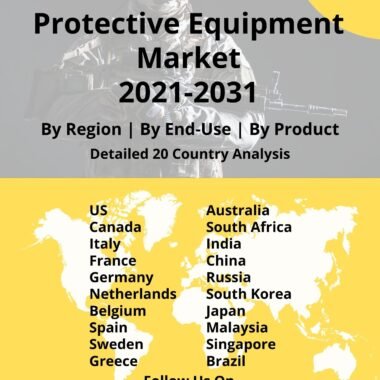Description
Smart Weapons Market
Frequently Asked Questions of Smart Weapons Market
Smart weapons market are military munitions that can be guided using a computer or any other hardware. The use of this technology is expected to increase precision and lethality in terms of military operations Smart weapons market size which in turn increases smart size. The use of Smart weapons market analysis within battlefield operations is poised to increase the hit to miss ratio. Smart weapons encompass a range of weaponry including precision-guided munition, smart gun, smart bomb, and smart mine that fuels the growth of the smart weapons market size.
The overall smart weapons market growth is segmented by Region, Technology, Platform, and Product. The overall regional segmentation for this market ranges across North America, Europe, APAC, the Middle East, and the RoW. The technology-based segmentation for this market includes Laser, Radar, Sonar, GPS, Infrared, Others. In terms of product, the overall market is categorized into Missiles, Munitions, Guided Projectiles, Guided Rockets, Precision Guided Firearms, etc. The Platform based segmentation for this market ranges across the land, air, naval and airborne vehicles.
On studying the overall market, it is seen that precision-guided munitions account for artillery weapons with a predefined trajectory. The use of this weaponry reduces collateral damage and increases the lethality against the intended target thus fuelling the smart weapons market growth. These weapons were used during the first Gulf War.
Precision-guided munitions accounted for 9% of the overall weapons used during this historic event. Roughly 75% of the targets were successfully acquired by these weapons during the same. The use of unguided bombs can cause massive devastation to the area around the battlefield. Therefore, the number of civilian casualties can also increase owing to the use of dumb bombs. However, the use of smart weapons streamlines the target and the operand ths increasing the smart weapons market growth.
Smart weapons market reports, Smart Gun on the contrary is a weapon that can be used only via authorized users. The technology studies its operand thus preventing the weapon to be used by adversaries. The smart weapons market analysis, the weapon system can hereby be operated only by an authorized user. The technology makes use of RFID chips or other proximity tokens to recognize the user. Smart weapons market analysis, Some smart guns make use of fingerprint recognition, magnetic rings, or even mechanical locks. Smart weapons market trends, the use of this technology is poised to prevent adversaries from gaining access to weapons during closed combat battles.
Smart weapons market trends, another key technology within this market is the introduction of smart bombs. As the name suggests, the munition detonates on precisely reaching the target. The use of this weapon reduces the surrounding damage which could be potentially caused via the use of dumb bombs. Smart mines also account for a key segment of the smart weapons vertical.
The use of this technology ensures the self-destruction or deactivation of a land-mine towards the end of a conflict. Smart weapons market reports, the use of this technology ensures that the munition remains active only for the required timeframe. Smart weapons market forecast,, in the coming future if civilians are to inhabit the same region their safety is hereafter ensured.
Major factors driving Smart Weapons Market Growth
The smart weapons market is experiencing significant growth, propelled by a combination of technological advancements, increasing defense budgets, and evolving combat strategies. Key factors driving this growth include the demand for precision-guided munitions (PGMs), which offer enhanced accuracy and reduced collateral damage compared to traditional weapons. These munitions, equipped with advanced guidance systems such as GPS, laser, and infrared, are becoming essential for modern military operations.
Technological innovations are also playing a crucial role. Developments in artificial intelligence (AI) and machine learning are being integrated into smart weapons, enabling real-time decision-making and autonomous targeting. These advancements improve the effectiveness of weapons systems and provide military forces with a strategic advantage.
Furthermore, the rise in asymmetric warfare and counter-terrorism operations has highlighted the need for smart weapons. These conflicts require highly precise and adaptable weapons that can be deployed in complex and dynamic environments. As a result, military forces globally are investing in smart weapons to enhance their operational capabilities.
The market is also benefiting from increased defense spending, particularly in regions facing geopolitical tensions. Countries like the United States, China, and Russia are leading the way in the development and procurement of smart weapons to maintain their military superiority.
Trends influencing the Smart Weapons Market Size
The smart weapons market is influenced by several key trends that are shaping its size and growth trajectory. One prominent trend is the integration of artificial intelligence (AI) and machine learning into weapon systems. These technologies enhance targeting accuracy, decision-making speed, and operational efficiency, leading to increased demand for AI-powered smart weapons.
Another significant trend is the shift towards network-centric warfare, where communication and information-sharing across various military platforms are prioritized. This approach necessitates advanced smart weapons capable of seamless integration and interoperability with other systems, boosting their adoption.
Miniaturization and modularity are also driving the market. As smart weapons become smaller and more adaptable, they can be deployed in a wider range of scenarios and platforms, from drones to ground vehicles. This flexibility increases their utility and appeal to military forces.
The growing emphasis on precision and reduced collateral damage in military operations is pushing the development of more sophisticated guidance systems. Technologies such as GPS, laser, and infrared targeting are becoming standard in smart weapons, enhancing their effectiveness and market demand.
Additionally, geopolitical tensions and the rise of asymmetric warfare are compelling nations to invest in advanced smart weapons to maintain a strategic edge. Defense budgets are increasing, particularly in regions with heightened security concerns, further propelling market growth.
Smart Weapons Market Forecast & Dynamics
The smart weapons market is poised for robust growth, driven by evolving military needs and rapid technological advancements. Forecasts indicate significant expansion over the coming years, fueled by increased defense budgets and a heightened focus on precision and efficiency in modern warfare. Key dynamics shaping this market include advancements in guidance systems, integration of artificial intelligence (AI), and the shift towards network-centric warfare.
The demand for precision-guided munitions (PGMs) is a major growth driver, as these weapons offer superior accuracy and minimize collateral damage. Innovations in GPS, laser, and infrared technologies are enhancing the effectiveness of these systems. AI and machine learning are further revolutionizing smart weapons, enabling autonomous targeting and improved decision-making capabilities, thus making them indispensable in complex combat scenarios.
Network-centric warfare, which emphasizes seamless communication and data sharing across various military platforms, is also boosting the market. Smart weapons that can integrate and operate within these networks are in high demand, as they enhance operational efficiency and effectiveness.
Geopolitical tensions and the rise of asymmetric warfare are compelling nations to invest in advanced smart weapons to maintain a strategic edge. Regions with heightened security concerns, such as the Asia-Pacific and the Middle East, are significantly increasing their defense spending, further driving market growth.
Smart Weapons Market Analysis for Recent Developments
The smart weapons market has witnessed significant recent developments, reflecting the rapid pace of technological advancement and evolving military requirements. One of the most notable trends is the integration of artificial intelligence (AI) and machine learning into smart weapons. These technologies enhance targeting accuracy, enable autonomous decision-making, and allow for adaptive responses to dynamic combat environments. For example, AI-powered systems can analyze vast amounts of data in real-time to identify and prioritize targets more effectively.
Another major development is the advancement in guidance systems, particularly in GPS, laser, and infrared technologies. These improvements have resulted in more precise and reliable smart weapons, capable of hitting targets with minimal collateral damage. Enhanced guidance systems are becoming a standard feature in modern smart weapons, increasing their effectiveness and appeal to military forces.
The adoption of network-centric warfare principles is also influencing the market. Smart weapons are now designed to integrate seamlessly with various military platforms, allowing for enhanced communication and coordination on the battlefield. This interoperability is crucial for modern military operations, where rapid information sharing and coordinated actions are essential.
Furthermore, geopolitical tensions and the rise of asymmetric warfare have accelerated the development and deployment of smart weapons. Countries are increasingly investing in these advanced systems to maintain a strategic edge and address security challenges. Notably, regions like Asia-Pacific and the Middle East are boosting their defense budgets to acquire cutting-edge smart weapons.
![Global_Smart_Weapons_Market_2024-2034_(2)[1] Global_Smart_Weapons_Market](https://aviationanddefensemarketreports.com/wp-content/uploads/2021/11/Global_Smart_Weapons_Market_2024-2034_21.jpg)






